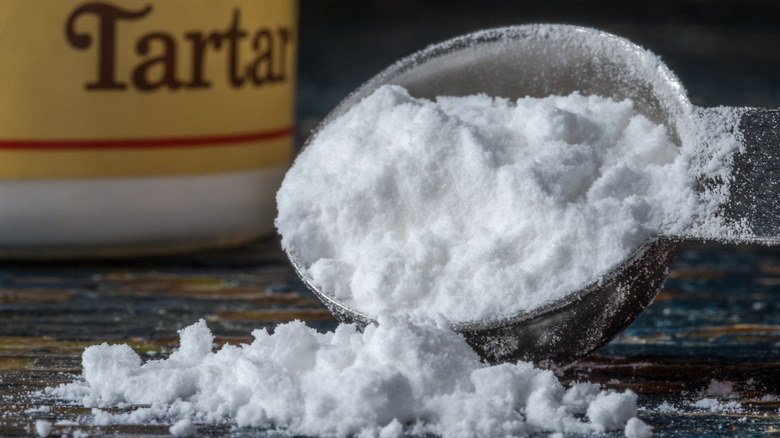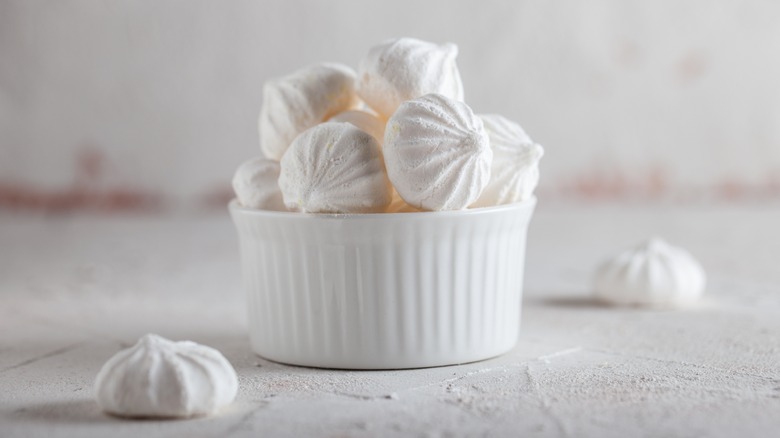The Simple Addition To Convert Baking Soda Into Baking Powder
There is one main difference between baking soda and baking powder — a missing ingredient. More specifically, an acid component. Baking soda is an ingredient in and of itself known as sodium bicarbonate. Baking powder actually has baking soda in it, being a combination of sodium bicarbonate and a powdered acid, and sometimes cornstarch.
That missing acid in baking soda is what delineates the different uses between the two leaveners. If there is an acid in the recipe's ingredient list, such as buttermilk or lemon juice, baking soda will be activated and bubble up with gas when it comes in contact with it. Because baking powder has a built-in acid component, all it needs is a liquid plus heat to be activated (think eggs in the ingredient list and then into the oven as the final step of the recipe).
The simple ingredient you can add to transform baking soda into the all-inclusive baking powder is another pantry powder you may have on hand — cream of tartar. Cream of tartar is the missing acid needed to activate the baking soda. Just adding two tablespoons of cream of tartar to one tablespoon of baking soda and mixing thoroughly will result in your very own homemade baking powder.
What is cream of tartar?
Cream of tartar may look very similar (if not identical) to both baking soda and baking powder, but it's quite different. The name sure doesn't offer any insight as to what it's made of — it's not creamy at all, and no, it has absolutely nothing to do with tartar sauce. Its official chemical name is potassium bitartrate (hence the moniker), and it's often used to stabilize whipped egg whites or whipped cream. It's used more for structure, such as with meringue cookies. If you're an avid baker, you probably have some lying around for such purposes.
Cream of tartar is a byproduct of winemaking that results when the grape juice ferments. The potassium bitartrate forms crystals on the walls of the cask that are then processed to make the powder. It's technically just a powdered acid that will not only activate baking soda, but can keep vegetables bright in color and add a bit of tangy taste to baked goods, as with a snickerdoodle cookie.

